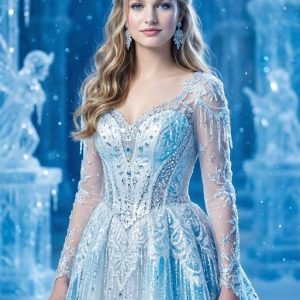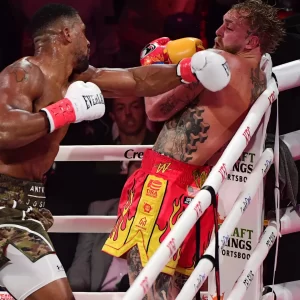Vivian Wilson on Her First Fashion Week and Why She Loves the ‘Inherently Political’ Runway

For many young creatives, the dream of fashion week exists somewhere between fantasy and reality—a whirlwind of flashing cameras, hurried fittings, and the intoxicating rhythm of art meeting commerce. For Vivian Wilson, stepping into her first fashion week was not only a professional milestone but also a deeply personal revelation. The rising style voice quickly realized that the runway was about much more than clothes. For her, it became a platform where identity, politics, and storytelling collided.
First Impressions of a Dream Realized
Walking into her first show, Wilson admits she felt an overwhelming mix of nerves and exhilaration. “It’s surreal,” she confessed. “You grow up seeing these moments in magazines, and suddenly you’re part of it—the lights, the music, the energy.”
But rather than being swept away solely by the glamour, she was struck by the layered messages embedded in each collection. Designers were not only presenting fabric and silhouette but also statements about the world: questions of gender, cultural identity, climate change, and social justice. “That’s when it clicked for me,” Wilson said. “Fashion isn’t just about beauty. It’s about power, politics, and change.”
Why Fashion Feels Political
When Wilson describes runway shows as “inherently political,” she isn’t being metaphorical. She points to fashion’s ability to reflect and challenge society. The runway, she argues, is where global issues are translated into visual narratives—whether through bold slogans, the casting of diverse models, or the choice of sustainable materials.
“Clothing is one of the first ways we express ourselves,” Wilson explained. “The runway amplifies that expression. Every stitch, every fabric choice, every model who walks—it all carries meaning. It tells you who belongs, who is celebrated, and what issues matter.”
Her reflections echo a growing sentiment in the industry: that fashion is never neutral. From the black turtlenecks of Steve Jobs to the red-carpet gowns embroidered with protest slogans, style choices shape cultural memory and political discourse.
Navigating the Backstage
Wilson’s experience wasn’t just limited to the front row. She spent time backstage, where the real magic—and chaos—unfolds. “It’s like organized madness,” she laughed. “People running around with pins in their mouths, makeup artists working against the clock, models slipping into looks in seconds. But amid that chaos, there’s this sense of purpose. Everyone knows they’re part of something bigger.”
Backstage, she also saw how inclusivity and representation are increasingly prioritized. “There were models of all sizes, ethnicities, and genders. You could feel that this wasn’t just performative—it was intentional.”
The Influence of Global Issues
This year’s fashion week was particularly marked by collections addressing pressing global issues. Climate activism emerged through designers using recycled textiles and natural dyes. Discussions of gender fluidity were embodied in androgynous tailoring and unisex designs. And geopolitical tensions were reflected in color palettes, prints, and even runway set designs.
Wilson noticed these undercurrents and connected them to broader cultural movements. “Designers aren’t working in a vacuum,” she said. “They’re responding to what’s happening in the world. Fashion week is like a mirror—it reflects the anxieties, the hopes, and the dreams of society.”
The Emotional Resonance of Fashion
While critics often dismiss fashion as superficial, Wilson pushes back. For her, the emotional weight of seeing identity expressed on a runway is undeniable. She recalls one collection where models wore garments embroidered with words of resistance from marginalized communities. “I got chills,” she said. “It wasn’t just about clothes—it was about visibility, about giving people a voice.”
Moments like these confirmed her belief that fashion carries cultural responsibility. It can uplift, provoke, and even disrupt. “The runway becomes a protest march, a love letter, and a vision of the future—all at once,” she reflected.
Finding Her Own Voice
For Wilson, fashion week wasn’t just about observing—it was also about finding her own place within the industry. As someone passionate about cultural commentary, she sees herself bridging the worlds of fashion journalism and social critique.
“I want to write about clothes, yes, but also about what they mean—about the stories they tell,” she said. “It’s not enough to say, ‘this season is all about red.’ I want to ask: why red? Why now? What does it symbolize for us collectively?”
By positioning herself as both an observer and participant, Wilson hopes to carve out a niche where style writing becomes a tool for deeper dialogue.
The Allure of the Runway
Of course, fashion week isn’t all politics. There’s still the undeniable allure—the artistry, the spectacle, the breathtaking craft of couture. Wilson admitted she was starstruck at moments, awed by the creativity on display. “When a model walked out in a gown that looked like liquid gold, I forgot about everything else. It was pure magic,” she laughed.
But even in those dazzling moments, she insists the political undercurrent remains. “Even beauty is political,” she explained. “Who gets to be seen as beautiful? Whose craftsmanship gets celebrated? Those are questions fashion can’t escape.”
Looking Ahead
As she looks to the future, Wilson hopes to attend more shows, not just as a guest but as an active contributor to the conversation. “I see fashion week as a classroom,” she said. “Every show teaches me something new about the world and about myself.”
Her debut season left her with a renewed appreciation for the runway’s complexity—a place where glamour meets grit, and where politics are woven into every seam.
“Fashion week gave me more than inspiration,” she concluded. “It gave me conviction—that this industry can be a force for change if we’re willing to see it that way.”
Conclusion
Vivian Wilson’s first fashion week was not only a rite of passage but also a lens through which she discovered the deeper layers of an industry often misunderstood. While the world sees glitz and glamour, she sees politics, identity, and activism stitched into the fabric of every collection.
Her reflections remind us that fashion is never just about clothes—it is about meaning, belonging, and power. And for Wilson, that’s precisely why she loves it. In the end, the runway is not just a stage for style—it’s a stage for society itself.





